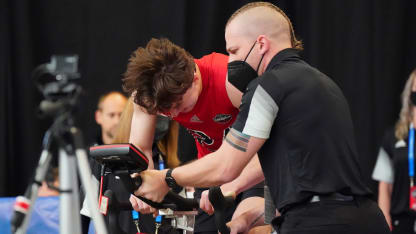During the last 12 months, the Kraken hockey operations group has put together a list of 300 prospects deemed possible selections for the 2022 NHL Draft July 7 and 8 in Montreal. Ninety-six of those players were in Buffalo in late May and early June for the league's Scouting Combine, providing a chance to test the athletes' fitness, conduct medical exams and connect during in-person interviews.
It marked the first combine in three seasons. The last two were canceled due to COVID-19 protocols. The Kraken, like all NHL teams, turned to video conferences to get a feel for the personalities of players like top Seattle draft choices such as center Matty Beniers, defenseman Ryker Evans and forward Ryan Winterton (who is still playing meaningful hockey with his team qualifying for the elite juniors Memorial Cup tourney June 20 to 29 by winning the Ontario Hockey League championship Wednesday).
Scoping the NHL Combine
The Kraken hockey operations group spent a recent week in Buffalo getting to know more about 96 draft prospects. A closer look at the fitness tests and in-person interviews





















